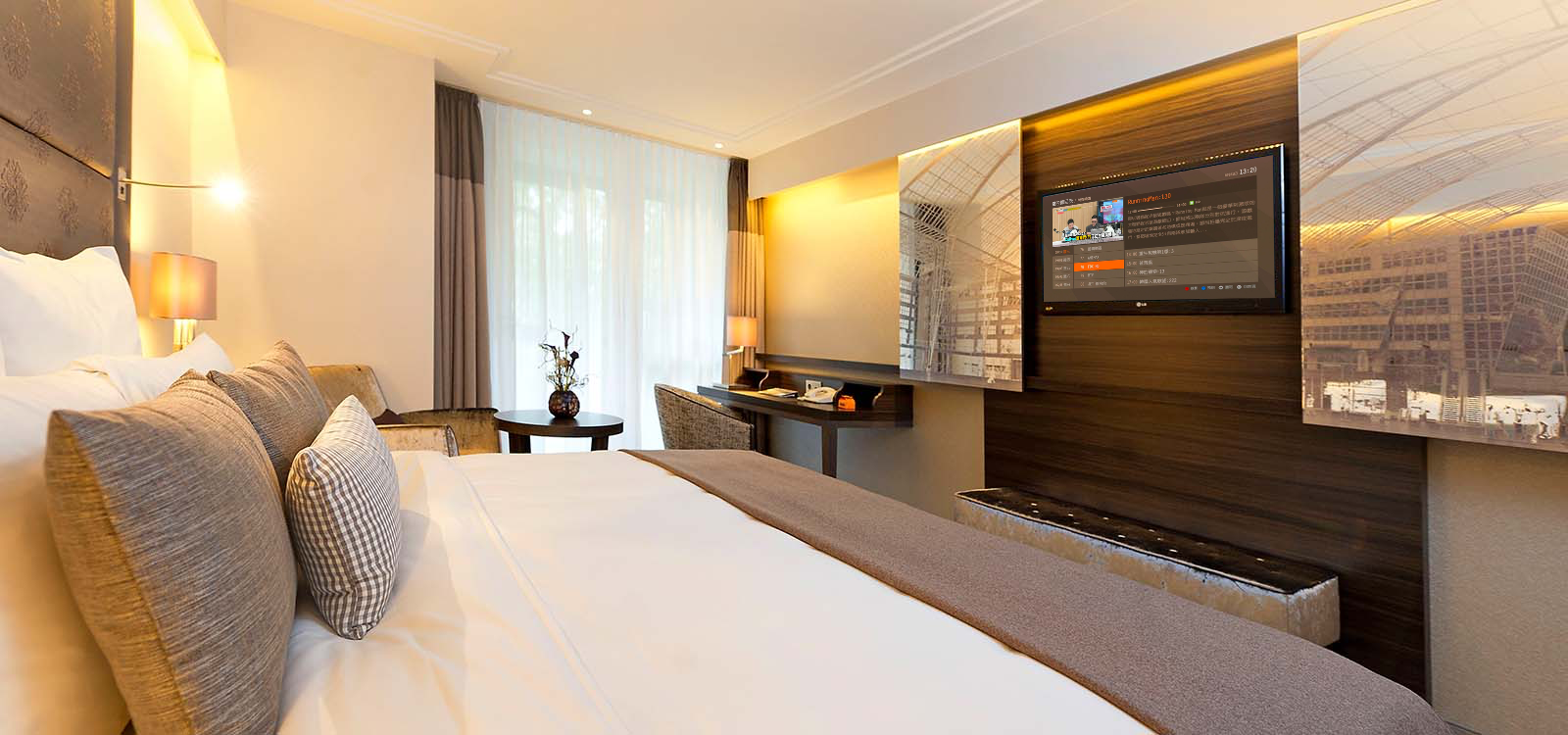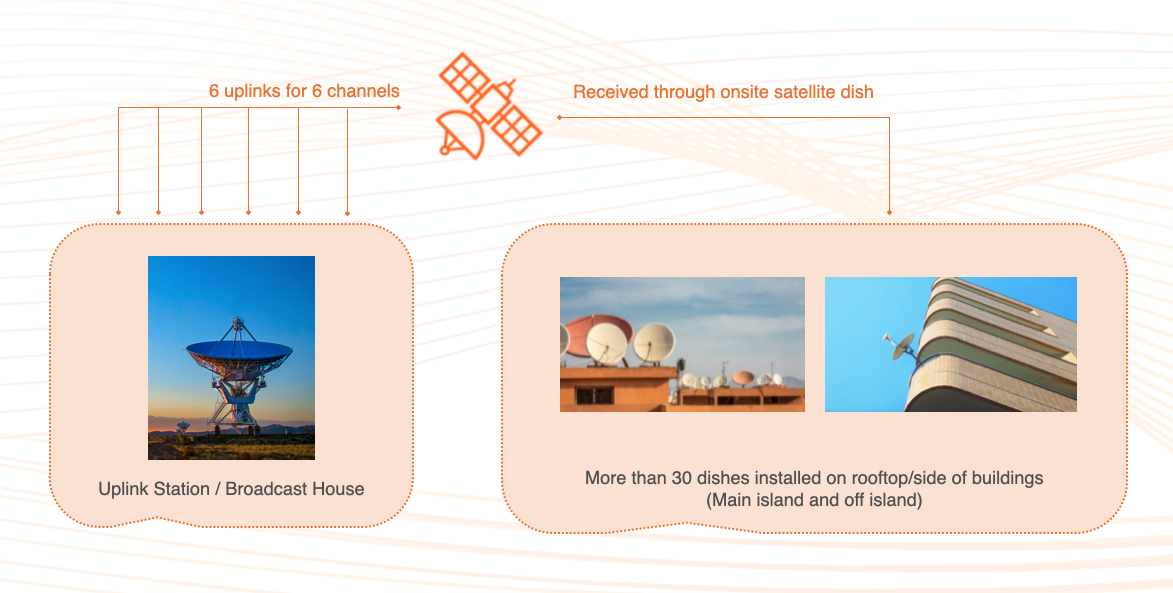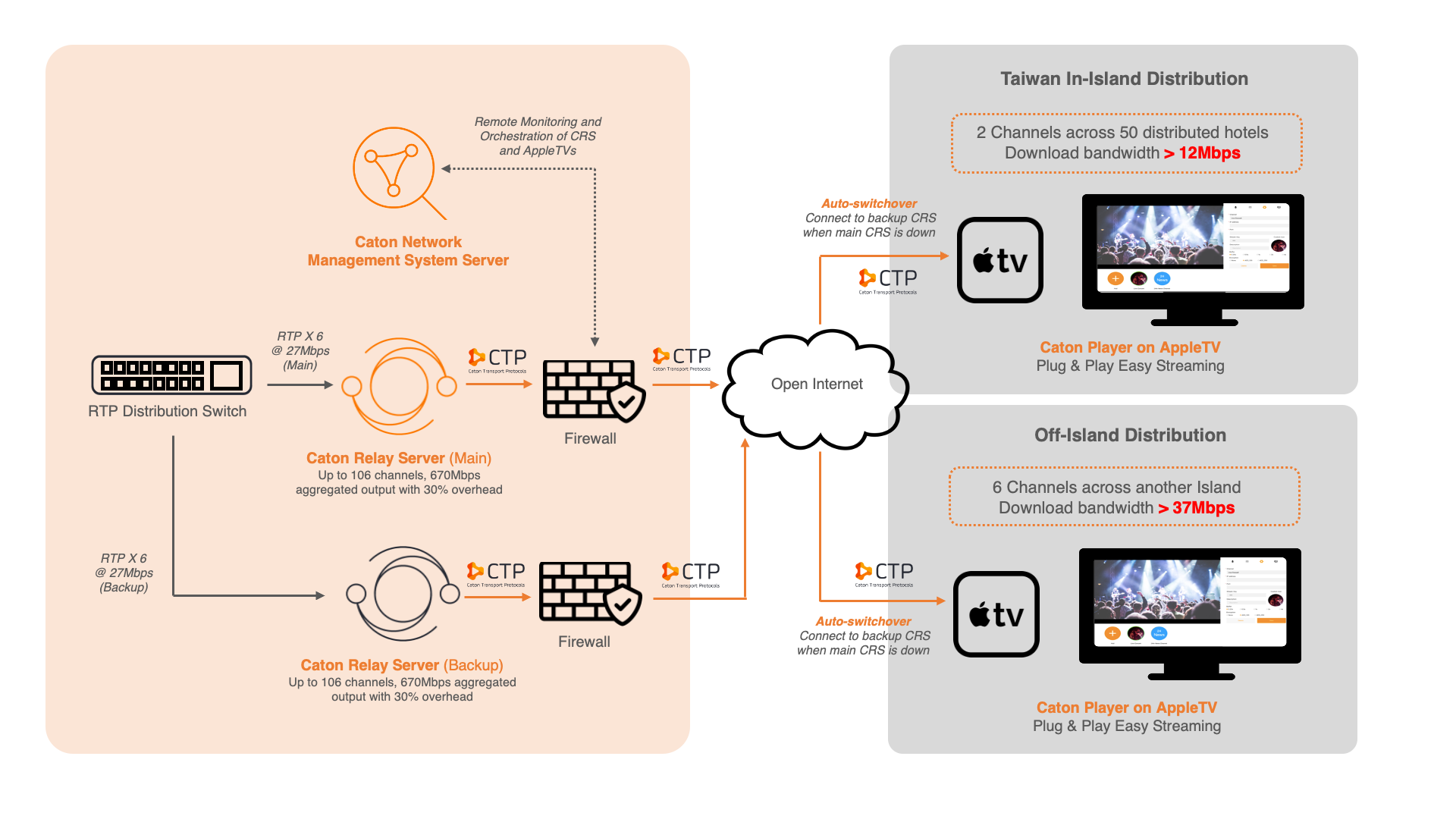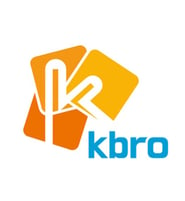 With in-room entertainment increasingly becoming a vital part of the guest experience, hoteliers are raising their game in the entire content delivery eco-system, from content sourcing to mode of delivery. While guests expect content to be relevant and delivered in high quality and stable fashion, backend service delivery teams often struggle with the challenges and limitations related to their existing legacy architecture and their reliance on satellite transmission.
With in-room entertainment increasingly becoming a vital part of the guest experience, hoteliers are raising their game in the entire content delivery eco-system, from content sourcing to mode of delivery. While guests expect content to be relevant and delivered in high quality and stable fashion, backend service delivery teams often struggle with the challenges and limitations related to their existing legacy architecture and their reliance on satellite transmission.
Market Challenges
One of the most well-known challenges of a satellite transmission that prevents quality assurance is its sensitivity towards atmospheric changes. Signals are usually affected by extreme weather. Even in perfect conditions, satellite transmission architecture lacks the technology for traffic optimization, greatly limiting the speed, quality, and performance of content delivery.

Beyond quality assurance, hoteliers are also faced with a series of cost and logistical challenges. In a typical satellite transmission architecture, the content signal is beamed from an uplink station to the satellite and received through a ground satellite dish. Uplink stations typically charge a hefty amount per uplink (per content stream) resulting in high costs to attain scalability. Besides, such a mode of deployment often lacks redundancy implementation (e.g., only 1 uplink dish), and signal availability is solely dependent on that specified satellite, which makes it the single point of failure.
On the receiving end, hoteliers are often faced with physical limitations on satellite dish installations. While larger hotels have the luxury of rooftop spaces, smaller hotels in a co-tenanted building must settle for installations on the side of the buildings, which in turn affects the aesthetics and ultimately, the signal quality.

While many hoteliers may overcome the abovementioned challenges or end up settling for less, none of them can escape the logistical and costly nightmare that comes with satellite migration. With the increasing uptake of 5G deployments, certain spectrums of the C-band satellites are no longer available, forcing users to migrate to Ku-band satellites. Such migration is a cumbersome and expensive process to endure.
Evidently, the inherent issues with satellite content delivery have resulted in a pressing need for alternate transmission methods that can deliver content more effectively. This has driven some content providers to adopt content delivery networks (CDN) for their transmission needs, in pursuit of a stopgap solution. Unfortunately, due to geolocation limitations of these CDN servers and end-users’ network filters, hotel guests often face subpar quality content and even channel disconnects, despite the hefty expenses invested by the content provider/hotelier.
Solution
As one of the largest providers of cable and telecommunication services in Taiwan, and the forerunner of technology adoption, KBRO Company foresaw the need to evolve in order to deliver content more efficiently, all while providing better service assurance to its hotelier customers.
Through a strategic collaboration with Caton Technology, KBRO Company onboarded a next-generation IP transmission architecture that eases the hassle of content transmission management while providing their customers with high service availability and quality assurance.

Leveraging Apple TV, a cost-effective and compact video receiver and layout device that supports High Efficiency Video Coding (HEVC), preloaded with Caton Player, a professional video receiver and playout software, KBRO Company was able to deliver content (up to 4K quality) swiftly and efficiently to a large pool of hotels distributed across Taiwan without the hassle of bulky satellite dish installation, all while working within a privately owned video network.
Powered by the Caton Relay Server (CRS), the state-of-the-art architecture enabled KBRO Company to bring its service assurance to the next level, with the ability to provide content high availability through the easy deployment of redundancy backup links. In the event when the main transmission link becomes unavailable, the Caton Player on Apple TV deployed in-room will intelligently switch to the backup link without human intervention. The CRS deployed has also provided KBRO Company with the needed scalability, enabling them to add on new content streams with just a few clicks on the system.
Besides availability assurance, content is also transmitted in an optimized and stable manner, by tapping on Caton’s proprietary transport protocols. Inbuilt with more than 30 AI-powered algorithms to mitigate packet loss and network challenges intelligently, content delivered on Caton Transport Protocols (CTP) are assured of the highest quality with lowest latency possible.
Beyond delivering the best guest experience to the hotels, the implementation has also improved internal workflow efficiency significantly. Leveraging Caton NMS, KBRO Company’s service delivery team is now able to remotely manage and orchestrate the huge number of Apple TVs deployed in the hotels across Taiwan, while actively monitoring the streams’ health through a single-pane-of-glass.
“ The implementation has simplified operations significantly, allowing the team to remotely manage the equipment within the eco-system easily. With the newly gained high-availability and smart fail-over, along with transmission optimization through Caton Transport Protocols, we are confident that content delivered to our customers will be uninterrupted and of better quality.”
Mr Jack Peng
Head of Master Control Centre, KBRO Company
Conclusion
The transformative deployment has empowered KBRO Company to provide its customers with better quality content and service assurance, while drastically reducing the last mile onsite set-up cost and man-hours. With its expansive scalability, new content streams can now be easily added, providing hotel guests with more content options. Combining quality, availability, and performance in their content delivery process, KBRO Company is primed to deliver the best guest experience for existing and new hotels onboarded onto their eco-system.

|

|
About KBRO Company
KBRO is Taiwan’s leading Multiple System Operator (MSO) of TV, ultrafast broadband, Super MOD (VOD + Internet + Connect TV) and home security services. KBRO serves more than one million pay TV subscribers across 8 cities through its 12 cable system operators. As the pioneer in Taiwan’s cable industry, KBRO is committed to evolving and enhancing its customer experience through constant innovation, allowing its valued customers to enjoy the benefits of digital audio-visual entertainment services. To find out more, please go to http://www.kbro.com.tw/
|
About Caton Technology
At Caton, we believe in the power of IP networks to enable high-quality real-time interactions between people, things and everywhere in between. We are passionate about empowering our technology to unlock growth potential for our customers and remain committed to their success. Innovation, service and reliability are core values that define us. Contact us, for more information.
Do you know of someone who may be interested in this? Share it via:












